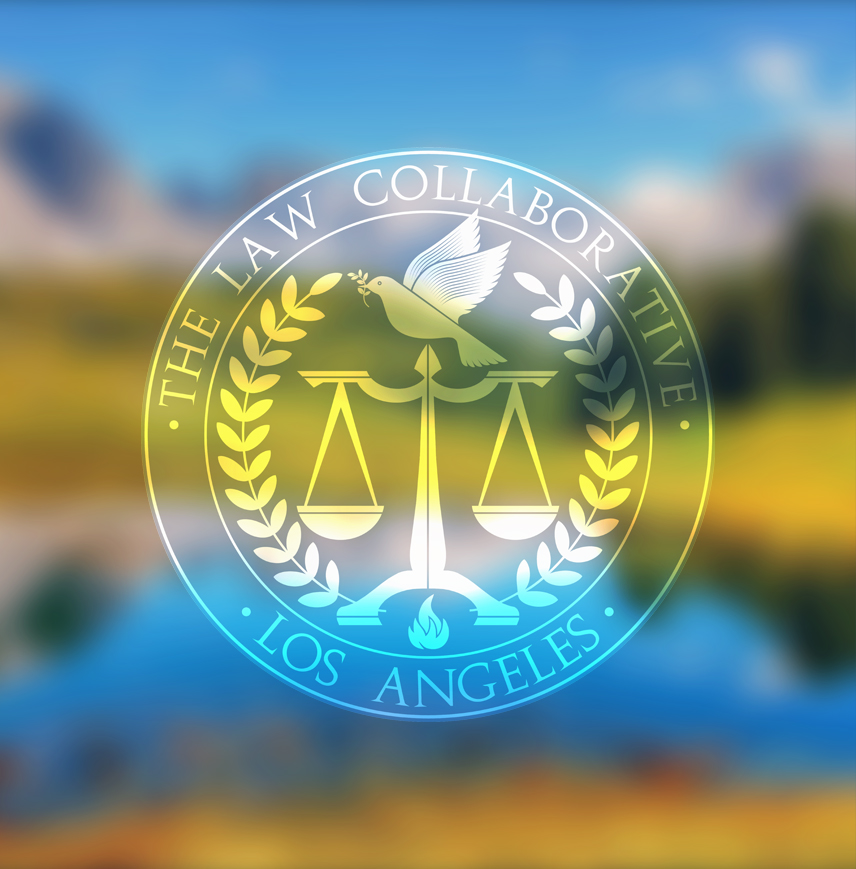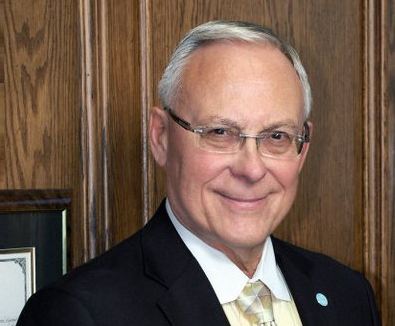At The Law Collaborative Los Angeles, we offer our clients several divorce options.
You don’t have to have a messy, drawn out divorce.
It’s your house. They’re your kids. It’s your money. It should be your choice.
Our firm focuses on nondestructive methods of dispute resolution. Years of experience have taught us that problem-solving and effective negotiation produce better results than a trial in most divorce cases. Our attorneys have experience with all models of dispute resolution, from Consensual Dispute Resolution (Collaborative Law and mediation) to masterful litigation.
What Type of
Divorce is Right for You?
- Mediation
- Collaborative Law
- Do it Yourself (DIY)
- Divorce Without Court
- Arbitration
- Negotiation
- Litigation
- Case Management
What is Mediation?
Mediation is private, confidential, and low cost. A neutral mediator helps the couple resolve custody, support, and financial issues. The mediator cannot provide legal advice, but as a licensed attorney, the mediator can inform the couple about legal issues and likely outcomes.
In his book, A Promise to Ourselves, Alec Baldwin discusses the terrible toll inflicted on families by divorce court and says, “When choosing a lawyer, ask them their strategy before you sign any document or pay any retainer. If the first words out of their mouth are not about mediation, don’t hire them… You want to do everything you can to avoid going to court. If your lawyer steers you away from mediation, get rid of them.”
Everything considered, the worst mediated outcome is usually better than the best litigated outcome. That’s because courts are limited in how they can divide assets, debts, and responsibilities. Our highly trained mediators can help you reach agreements, heal relationships, and find creative solutions that work without going to court. And while regular courtroom proceedings are a matter of public record, mediation is a confidential process that will help protect your personal and financial privacy.
In mediation, you speak for yourself and make your own decisions from an informed mindset, minimizing upset, alienation, and costs. When an agreement is reached, the mediator can help you memorialize the terms so you can have it reviewed by an independent attorney if you wish. If the mediator you hire is a licensed attorney, they can file your agreement with the court as a final divorce judgment.
It is important to understand that a mediator is neither party’s advocate and cannot give individual legal advice. An attorney mediator can provide legal context and explain likely scenarios if the parties went to court, but they can not take sides – a mediator must remain neutral. The best mediators will provide information and help design different options and scenarios to resolve issues but they will not make suggestions or decisions which might alienate a party, nor will they allow you to sign anything until you completely understand the terms and have had a chance to discuss it with independent counsel.
In California many mediators are lawyers or mental health professionals, but the field is unregulated and some “mediators” have little training and can actually exacerbate conflict. We regularly meet with couples who tried to mediate with a CPA, pastor, or therapist, and things went badly. So it is important that you choose a mediator with experience and training. Our mediators have a minimum of 40 hours of formal mediation training and have successfully mediated thousands of cases. We are also pioneers in Online Dispute Resolution (ODR) utilizing video conferencing to successfully mediate disputes for clients all over the country.
The Law Collaborative can help you design a Win-Win settlement agreement that will realistically satisfy the needs and goals of all of the parties to the mediation. We are also available to analyze an agreement that has been drawn up for you by a mediator or lawyer outside of our office.
To schedule an appointment for Los Angeles divorce mediation with one of our experienced attorney mediators, or if you have a Memorandum of Understanding or other agreement you’d like us to review, call us at (818) 348-6700.
What is Collaborative Law?
Collaborative divorce utilizes state-of-the-art technologies, communication skills, and legal strategies to create win-win solutions for divorcing couples and their children, at a fraction of the cost of a litigated divorce. Both parties have an attorney but the attorneys cannot go to court.
Today, nearly half of all marriages end in divorce court. Unfortunately, our centuries old, adversarial justice system simply doesn’t work for millions of Americans. And now, thanks to recent budget cuts in California, you can expect a minimum eighteen-month delay before your case will be heard by a judge. In matters concerning child support or child custody, this can be catastrophic.
Anyone who has been involved in a messy divorce knows that traditional proceedings often become protracted, bloody, scorched-earth battles that devastate all those involved, both emotionally and financially. In fact, a full-blown divorce trial may take years of litigation and cost from $60,000 to $200,000 or more. In most cases, couples litigate for years until their estate has been completely drained. Then, when all the money is gone, when the children’s college funds are empty and the retirement funds have been bled dry, the couple settles out of court. Even when a couple is able to settle their divorce without ever stepping foot in court, they do so in the shadow of trial, under conditions of considerable tension and anxiety.
Part of the problem is that the traditional divorce system treats the end of a marriage as a contest, in which each party’s lawyer battles to obtain ‘the biggest piece of the pie,’ too often ignoring the financial and emotional costs of ‘winning.’
Fortunately, there is a better, faster, more affordable way to end irretrievably broken marriages and other legal disputes. It’s called Collaborative Law.
Collaborative Law is a new way of handling legal matters, including divorce, child support or spousal support modifications, and child custody disputes. It is a method whereby the attorneys for both parties agree to assist in resolving conflict using cooperation and problem-solving strategies rather than adversarial approaches and litigation. Negotiations between the two parties and their attorneys are interest-based rather than positional. Instead of sticking to one position, each party’s interests are considered while crafting a fair solution.
Why Choose Collaborative?
When couples want to have an amicable divorce, are willing to cooperate, and are willing to put the children’s interests before their own, a Collaborative Divorce should be considered. The many issues involved in a divorce are often too complex to expect one set of experts to have sufficient knowledge, experience, and background to reach the best possible result for all concerned. In Collaborative Divorce, the clients and counsel can bring in other professionals from other disciplines like finance or mental health, to serve as joint neutrals and help the couple resolve their conflict.
The number one job of the divorce professional is to provide education, information, and instruction. The number two job is to model positive, respectful behavior for the parties who, given their situation, are often operating in a state of diminished capacity. The third job is conflict management and dispute resolution. The fourth job is to provide a safe, protected environment for the raising of healthy, whole, and complete children.
Collaborative divorce is very different from the services provided by a traditional divorce lawyer. We realize that couples with a history of conflict don’t communicate well, which is why the collaborative process can include divorce coaches who help manage the emotional agenda. We also employ experienced financial analysts as needed, to help formulate a division of assets that will provide the best long-term outcome for both parties.
Family Law Attorneys Ron Supancic and Ty Supancic are pioneers in collaborative law, and our highly qualified team of attorneys comprises one of the most experienced legal teams in the State of California. We are a multi-disciplinary family law firm with over 60 years of combined legal experience. With offices in Woodland Hills, California, we specialize in collaborative divorce, mediation, contested and uncontested divorce, and child custody disputes. We also practice estate planning, writing wills, revocable living trusts, asset protection trusts, firearm trusts, and medical directives.
Whether your situation is particularly complex, or you are feeling uncertain about the qualifications of your current lawyer, or are simply overwhelmed with trying to navigate the court system, family law attorneys with solid experience are available at The Law Collaborative Los Angeles. We offer a unique consultation designed to educate you regarding all of your available choices. If you need help in any area of family law, we invite you to call our office at (818) 348-6700 to schedule a private consultation.
15 REASONS TO CONSIDER COLLABORATIVE DIVORCE
1. Collaboration teaches children principles of respect and dignity.
2. Provides safety for both children and parents.
3. Uses neutral experts to reduce costs.
4. Satisfies everyone’s need to feel fairly treated.
5. Keeps the financial affairs of the family private.
6. Avoids the blame game and any associated negativity.
7. Reduces hostility and acrimony.
8. Turns the process into an opportunity for education and personal growth.
9. Clearly defines the Rules of Engagement.
10. Prevents surprises, sabotage, or a-bombs.
11. Raises the level of information and increases the likelihood of equity.
12. Results in more solid settlements.
13. Eliminates discovery wars.
14. Avoids the Battle of the Experts.
15. Enables lawyers to focus on legal issues and on problem solving, which are their areas of expertise.
When a Collaborative or Mediated Divorce is not possible, we have a team of skilled family law and divorce litigators who will protect you, your family, and your assets. To find out more about Collaborative Divorce and other divorce options, or to talk to a Los Angeles family law attorney today, call us at (818) 348-6700.
What is Do It Yourself Divorce?
With the help of the internet, more couples are attempting to divorce without legal counsel. Educate yourself in order to avoid the dangerous pitfalls of divorcing without legal guidance.
What is No Court Divorce?
No Court Divorce – Isn’t that an oxymoron? Divorce without litigious lawyers, battling with briefs drawn? Divorce without black-robed judges who beat their gavels mercilessly, decimating incomes, disrupting visitation, and destroying any hope of an intact family with each blow?
Who qualifies for a No Court Divorce?
The bad news is that not everyone qualifies for a No Court Divorce. The good news is that couples who are willing to put the emotional wholeness of their family before personal ill will, vendetta, or one-upmanship will qualify.
No court divorce is not marriage therapy or reconciliation counseling. It works on the assumption that the marriage is over and that the time has come to start building a restructured family. It is not appropriate for marriages in which one of the parties has hope that the marriage may continue. Divorce is usually a messy, tear-stained, highly emotional event for all parties involved. No court divorce cannot magically alleviate the pain, guilt and shame, or the blaming “if it wasn’t for you” way of thinking. No Court Divorce is no panacea. It is a process. Like all procedures, divorce without court follows a series of orderly steps to completion, “completion” being the key word. No Court Divorce can provide divorcing families with a psychological completion, or closure, that litigation can never match.
Can any attorney do a No Court Divorce?
Attorneys, like most other professionals, are required to continue their education long after law school, long after passing the bar exam. California Certified Family Law Specialists must take at least twelve hours of specialized professional training each year.
If you have a broken leg, it should be set by an orthopedic doctor. If you need a root canal, you want to see an endodontist. Likewise with the law. While a Personal Injury lawyer can handle a divorce, a Certified Family Law Specialist is preferred. As for No Court Divorce, it should only be undertaken by a Family Law Specialist trained in collaborative, or “cooperative,” law.
The Six Steps to No Court Divorce
1. Assessment
2. Intervention
3. Issue Identification
4. Process Selection
5. Initiation of the Legal Procedure
6. Closure
Assessment:
In the Assessment phase, the divorcing parties work with an attorney who is well-versed in collaborative law to identify the emotional profile of the family and determine effective interventions to assist the family as it is restructured. In this initial phase the parties meet and confer, discussing all options available with the express goal of designing a strategy that will contribute to the family’s reorganization, rather than destroying the family and dissolving all family ties.
Intervention:
Based on the Assessment, the parties, with assistance from their lawyers, determine the Interventions appropriate to their case. These interventions may include, but are not limited to, Separation Therapy, Parenting classes, Rage Management, Personal Coaching, and individual psychotherapy. It may be decided that the children will benefit by becoming part of a group for children of divorcing families.
All of this may sound expensive. Keep in mind that a family with an average income, one home, two cars, and perhaps a pension plan, may expect to spend upwards of $60,000 on a litigated divorce. Unfortunately, that figure is conservative.
A great deal more will be spent if child custody is an issue. A divorce without court will cost a small fraction of this, including the cost for all parties to be in therapy.
Consider also the personal benefit to those involved. It takes 300 hours of guided instruction to become a manicurist, 3,000 hours of supervised training (plus a master’s degree) to become a psychotherapist, and zero hours of schooling or training to marry or become a parent. Two of life’s most important events are left to chance and luck. That is pretty scary. Family restructuring should not be similarly treated. The truth is that divorcing parents do not become divorced from each other – they become divorced to each other, for as long as their children live. Why then should they not work together to achieve a healthy divorce, one in which mutual respect and concern for the best interests of the children prevail?
Issue Identification:
In the Issue Identification stage, the parties learn to apportion income streams, material assets and, with the assistance of a specialist, design an overall tax plan to facilitate a reorganization that contributes to the family rather than harms it. Insurance provisions can be addressed and a parenting plan designed with the help of a children’s coordinator.
Process Selection:
During Process Selection the parties examine the options of negotiation, mediation, arbitration, or case management. The best method of settling any dispute is with negotiation. If both parties have willingly and honestly participated in Issue Identification then negotiation is a good possibility. If, however, either party has a preponderance of power and the other feels even slightly coerced, negotiation cannot take place. Mediation is then preferred.
With No Court Divorce, mediation is accomplished with the assistance of a trained mediator and a collaborative lawyer to represent each party. Two lawyers and one mediator – sound expensive? Not compared to sitting in a backlogged court for days, not-so-patiently awaiting an available courtroom and a busy judge, who will then take Your matter into His hands and decide for you. He decides, not you.
Meanwhile, your lawyer and opposing counsel each bill on an hourly basis. While these attorneys wait with the parties to the action, they are unable to work on any other case. They must be responsible to the court, on hand and available. Their time adds up, even with good intentions.
If matters cannot be settled through mediation, arbitration is available using an arbitrator or rent-a-judge.
The presiding judge of the Family Law Department of the Los Angeles County Superior Court has instituted a program through which a retired judge or family law attorney may be hired by your representing lawyers to hear your case. This is more cost effective than traditional litigation because it eliminates the expensive wait. However, it is also the least preferable option. It still means that You give Your power to decide Your matter to Someone Else. That Someone makes the decisions, not you.
Remember, the more you and your soon-to-be former spouse agree, the less costly your case. An important purpose of No Court Divorce is to avoid the debilitating financial and emotional expenses of litigation and to choose a healthier, more financially sensible alternative process for dispute resolution.
Initiation:
Initiation, the fifth step, is where typical courtroom divorces begin. That is when the parties decide it is time to file the Petition for Dissolution. Frequently, a joint petition is filed. This reinforces the collaborative nature of the dissolution, eliminates an “I’m up – you’re down,” mind set, and helps forestall adversarial tendencies. At this time temporary Orders, responses, and Case Management stipulations are filed, a Voluntary Settlement Conference may take place, and the parties participate in a joint resolution based on consensus.
Closure:
The process enters the final stage, Closure, or completion, when the judgment is prepared and entered. The final tax analysis is in order, insurance provisions are put in place, and, if desired, a ceremony may take place to mark the conclusion of the dissolution and reinforce the vision of the still viable, though restructured, family unit.
An insightful CPA based in Los Angeles with whom I work told me the advice he always gives his divorcing clients: “It is as important to have a good divorce as it is to have a good marriage. You may have to live longer with the divorce than you lived with the marriage.” Those who, best efforts aside, find themselves walking the path of dissolution would be wise to follow that advice. No Court Divorce provides healthier restructured families and stronger support for children, and may serve to mend and embellish co-parenting relationships for years to come.
What is Arbitration?
Similar to Mediation, Arbitration operates in an out-of-court atmosphere, but applies some of the constraints found within the litigation process.
What is Negotiation?
In the shadow of litigation, parties can hire traditional lawyers, file papers, serve subpoenas, set depositions, and conduct formal discovery for eighteen months or longer. After the couple runs out of money, they sit down to settle.
What is Litigation?
The traditional method of divorce, litigation entails suing your spouse and seeking court orders for division of property, assets, support, and custody. The litigants present their case in chief and the judge decides what they get. People choose this method because they want their “day in court” but it is prohibitively expensive and rarely, if ever, provides the desired outcome.
What Is Case Management?
(Content Pending)
Unbundled
Legal Services
In the old days, you had to pay an attorney a “retainer” in order to obtain legal representation. Putting a lawyer on retainer meant that the attorney was standing by, ready to respond at a moment’s notice to any legal problem. No legal problems, the lawyer still got paid. But times have changed and most people are unwilling (let alone able to afford) to pay a lawyer for waiting.
Nowadays, most people only hire an attorney to represent them for the limited purpose of a particular lawsuit, or specific issue such as taxes. The purpose for which the attorney was hired is called the “scope of representation.” When you hire an attorney for your divorce or estate plan, the attorney’s retainer agreement will almost always specifically exclude anything outside the scope for which they were hired. But if anything happens that falls within that scope of representation, the attorney responds and the client incurs a fee.
The difference between the way things worked in the old days and the way things work now is an important distinction because lawyers who are opposed to the concept of limited scope representation are actually already practicing it when compared to the way their predecessors practiced law.
For many years, lawyers defined the scope of representation. Not because they should have, but because they could. People would hire a lawyer for their divorce or other legal matter and quickly find themselves passengers on a runaway roller-coaster, fees growing exponentially while the roller-coaster went up and down and around in circles. When you got off, your pockets were empty and the lawyer’s were full. Another analogy might be that the client called a lawyer into their kitchen to make a pot of stew. The lawyer stirs the pot and picks out the tastiest morsels. When the lawyer is full, they walk out of the kitchen and the client is left with a pot of hot water.
The system was able to justify this abuse by hiding behind “ethics.” Bar associations claimed it was in the clients’ best interest that the lawyers handled everything. In reality, it was only in the lawyers’ best interests because they were empowered to stir the pot as long as they saw money floating in the broth. When the case and assets were picked-over and nothing was left, the lawyer would settle things or get out of the case. Clients went into the system with stew and came out with broth.
In the last few years, reforming attorneys, who recognized the wastefulness and devastation wrought on families who could no longer afford to pay for their children’s college education, exposed the corruption of the old model of legal representation and they have been campaigning for change. Change came in the form of “limited scope representation” and “unbundled legal services.”
Unbundling is like à la carte pricing. You decide exactly what you want and what you don’t want. You can choose to perform certain tasks yourself at a great cost savings. For other things, you might want the attorney to offer advice, or maybe play a larger role that you define. The attorney can only perform the tasks you authorize, so you have more control over your legal expenses. For this reason unbundling often costs less than “flat fee” services.
If you’re comfortable and willing to prepare your own financial disclosures, why should you pay an attorney to do it? If you want an attorney to weigh-in, you have that option. If there are long periods of waiting for the other party to take action, you don’t necessarily need to be paying an attorney to wait with you. When something happens, you can always call the attorney for their input. In the unbundling model, the client has complete control over the services they use and the costs they incur.
But change does not come easily. Many bar associations fought these new models with the argument that people would be unknowingly forfeiting their legal rights if they took advantage of unbundling. If they could, they would shout, “Get your hands off our pot!” Who’s pot? This paternalistic posturing hid what the system was really worried about; the lawyer’s monopoly on fixing the price of access to justice.
Clients have an absolute right to choose what they want their attorney to do, just as much as they have a right to choose their attorney. Slowly and gradually, the legal system has come to acknowledge and accept this fact. For many legal matters, a full retainer still makes sense, but attorneys should have a duty to advise clients when that is the case and when the client might be better served by an alternative. If a lawyer dismisses or won’t discuss unbundling with you, look elsewhere – that lawyer might have their eyes on your pot of stew rather than on what’s best for you.
Recent Posts
Learn More About Divorce
 Creating New Family Traditions During Divorce
Creating New Family Traditions During Divorce Family Law Books by Ron Supancic
Family Law Books by Ron SupancicFamily Law Books by Ron Supancic
 Helpful Tools for Divorce in California
Helpful Tools for Divorce in CaliforniaHelpful Tools for Divorce in California
Immediate
Assistance
These are the most popular ways clients engage with us & decide if they are truly truly ready for a divorce.
Transforming your future
MEET OUR LAWYERS
Family Law Attorney Ty Supancic is a pioneer in collaborative law, and our highly qualified team of attorneys comprises one of the most experienced legal teams in the State of California. We are a multi-disciplinary family law firm with offices in Woodland Hills, California. We specialize in collaborative divorce, mediation, contested and uncontested divorce, and child custody disputes. We also practice estate planning, writing wills, revocable living trusts, asset protection trusts, firearm trusts, and medical directives.

Ty Supancic, Esq.
Attorney at Law
Attorney Ty Supancic practices extensively in the area of Consensual Dispute Resolution including mediated divorce, collaborative divorce, estate planning (wills & trusts), and asset protection
While Ty and his ex were able to have a quiet, dignified, and private divorce, the ultimate beneficiary was their daughter who got to grow up with cooperative co-parents and was spared the horrible toll that divorce courts.















